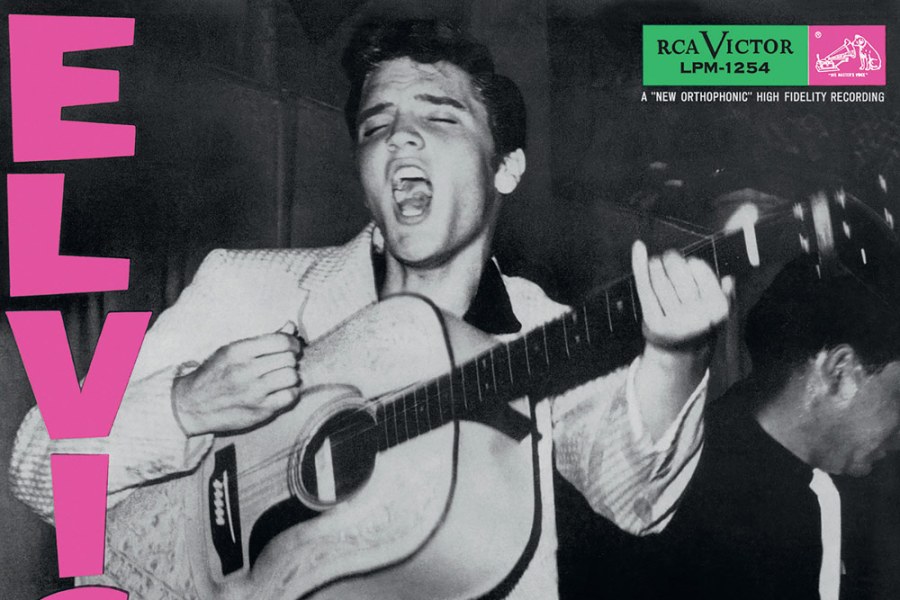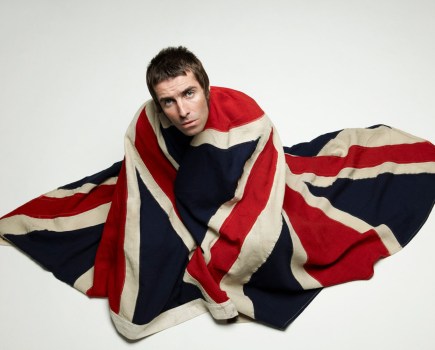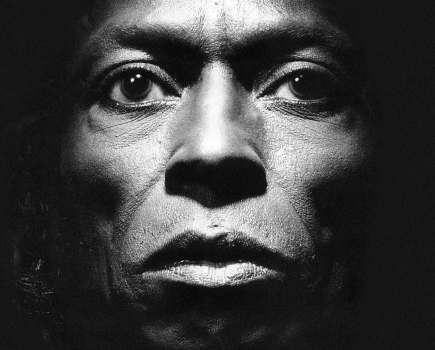The cover of Elvis Presley’s 1956 debut album is arguably the most influential single record cover produced in the history of rock and roll. But it is one that was shrouded in mystery for several decades, with a lack of clarity about who shot the cover image and some detractors wondering why a more flattering portrait image of Presley wasn’t used. In the US the album was known as Elvis Presley; whilst in the UK it was billed as Elvis Presley: Rock ‘n’ Roll. It’s also referred to as just Rock ‘n’ Roll or the Elvis Debut Album. Regardless of its exact name, it still stands tall amongst classic album covers…
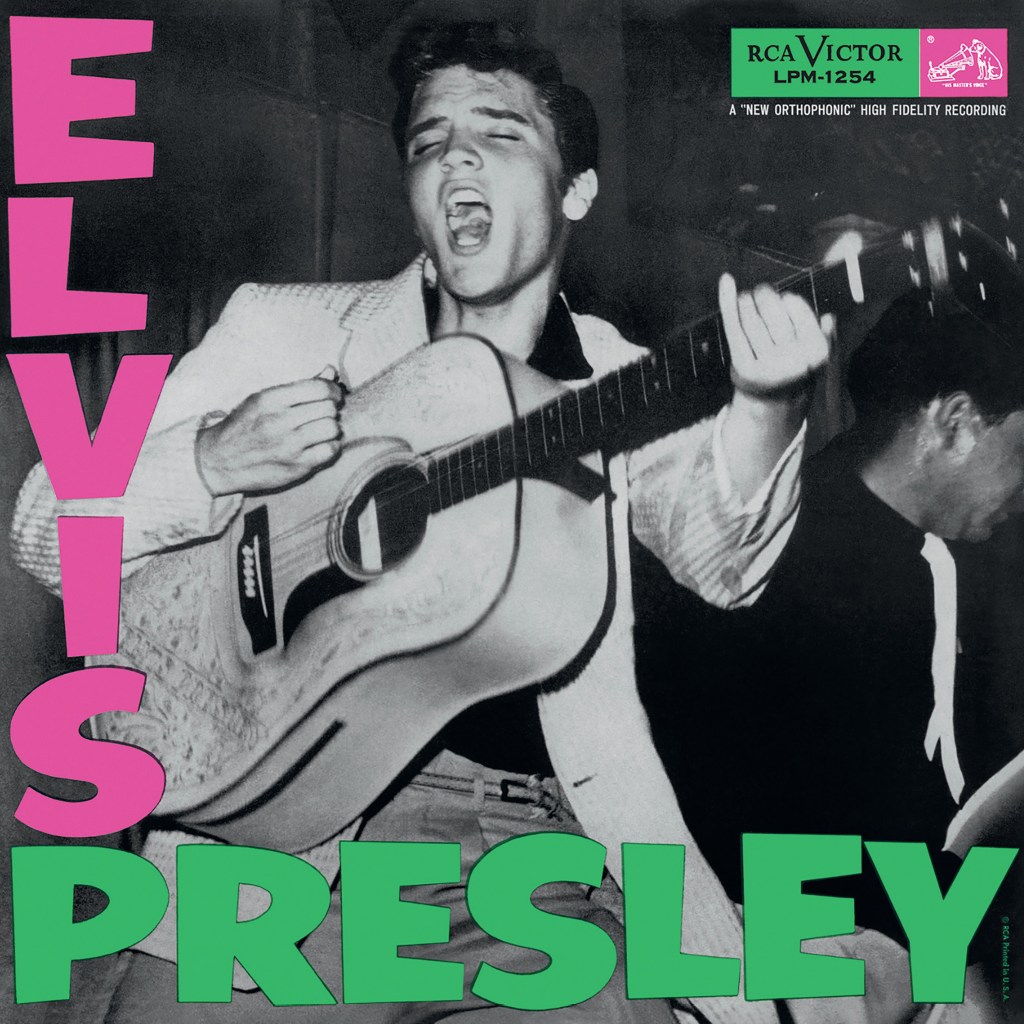
By the second half of 1955, singles on Sun Records by Presley had begun to make the US national country and western singles chart – Baby Let’s Play House and I Forgot to Remember to Forget went to number 5 and number 1 respectively. By late 1955 the Netherlands-born Colonel Tom Parker (birth name: Andreas Cornelius van Kuijk) was managing Presley. Parker had already dealt with RCA Victor for over a decade through his previous client, the hugely successful country music singer Eddy Arnold. Thus Parker had established an especially useful relationship with the head of the Country and Western and Rhythm and Blues division of RCA, Steve Sholes.
Number one single – Heartbreak Hotel
At the urging of Colonel Parker, on 21 November 1955, Sholes bought out Elvis Presley’s contract from Sam Phillips, the head of Sun Records and Studio in Memphis, for the then huge sum of $40,000. In those days the appeal of Elvis Presley and rock and roll music were still largely untested properties for the major record labels, but this album, along with the number one single Heartbreak Hotel, proved the selling power of both. It was the first RCA Victor album to earn more than $1,000,000, and in 1956 it sold over one million units. It’s often believed that record pressing plants worked 24/7 on producing the Elvis album.
Recording sessions
Presley had made TV appearances in four consecutive weeks on the Dorsey Brothers’ programme Stage Show in late January and early February 1956. So, RCA wanted to have an album in the stores quickly in order to capitalise both on the nationwide TV exposure and the success of his first hit single on the pop charts. That single, Heartbreak Hotel, swiftly climbed to the top of the charts after its release on 27 January 1956.
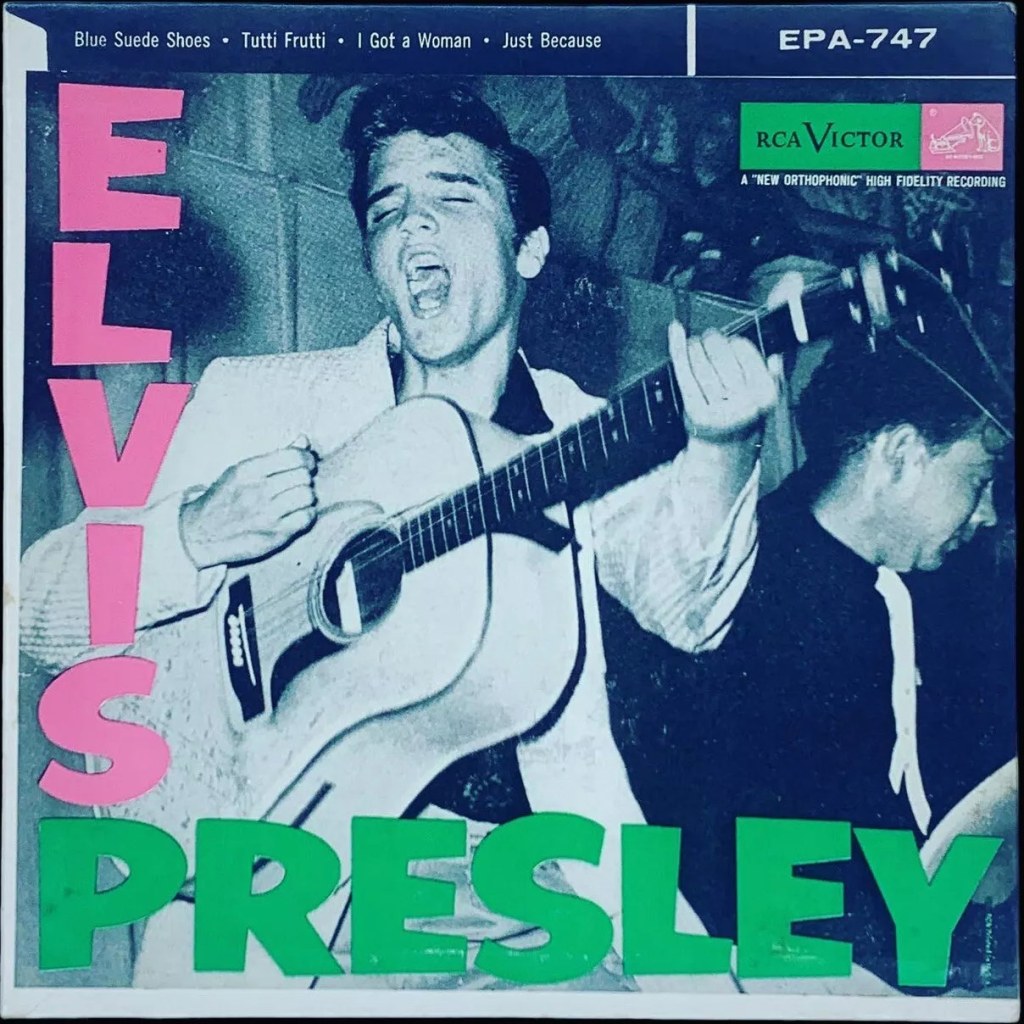
Sun Studios
The rights to the Sun Studio tapes had transferred to RCA Victor with the sale of Presley’s contract, which meant that five previously unreleased Sun songs – I Love You Because, Just Because, Tryin’ to Get to You, I’ll Never Let You Go (Little Darlin’) and Blue Moon – were added to seven tracks from just two RCA Victor sessions to bring the running time of the album up to an acceptable length of 28 minutes and 3 seconds. Phillips produced the sessions at Sun Studios, and no producer was officially listed for the RCA Victor sessions, though Sholes is the most likely candidate.
Blue Suede Shoes
Elvis and RCA Victor mixed the selections with covers of recent rhythm and blues songs. These included Money Honey by Jesse Stone, Ray Charles’s hit I Got a Woman and Little Richard’s 1955 classic Tutti Frutti. On 31 August 1956 RCA Victor took the unusual step of releasing the entire album as singles. The downside was that it kept the new Elvis Presley single that was released simultaneously – Shake, Rattle and Roll with the B-side Lawdy Miss Clawdy – from reaching the charts. However, Blue Suede Shoes, released in single form as a part of this multi-single experiment by RCA, kept Sholes’s promise to Sam Phillips and the track’s writer Carl Perkins by waiting over eight months since the song’s original release on Sun.
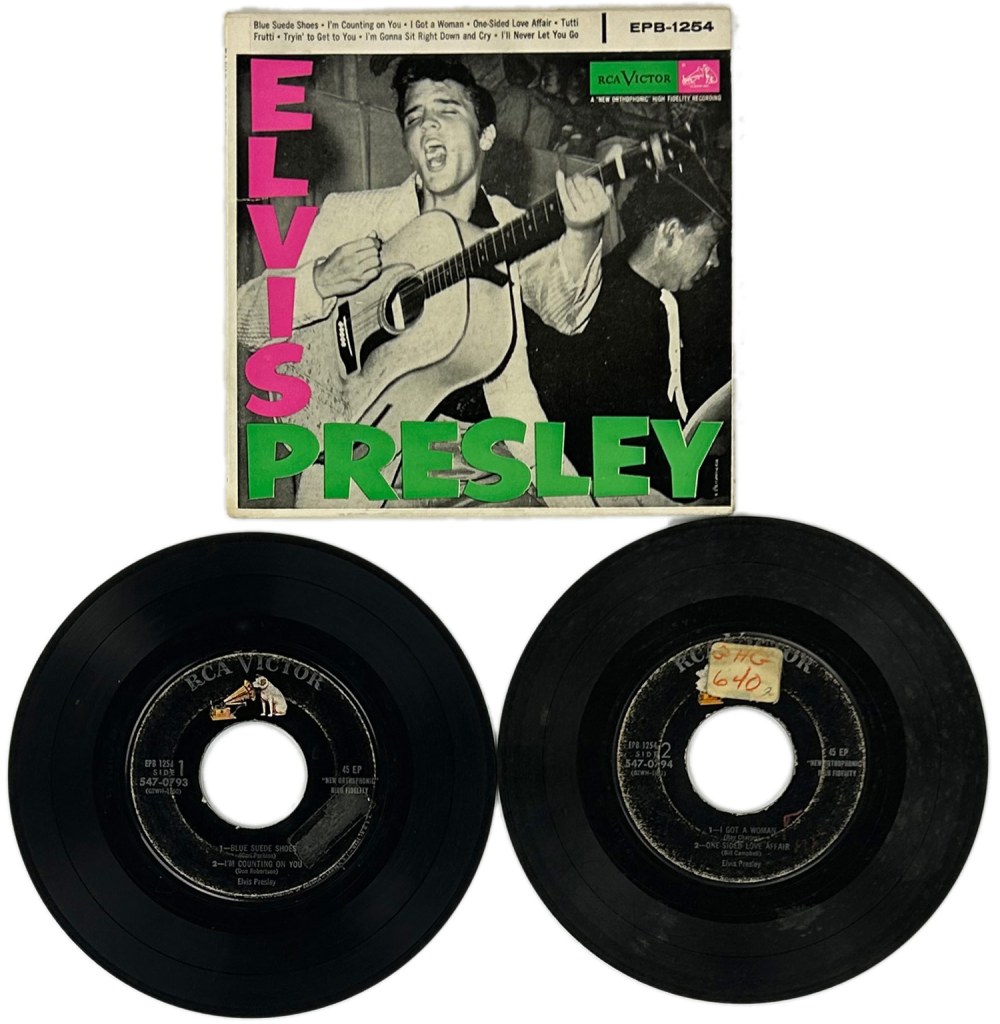
Tampa concert
In 1991 the cover of Presley’s debut album was ranked at number 40 on Rolling Stone magazine’s list of the 100 greatest album covers. The black and white cover photograph of Elvis in concert was taken at the Fort Homer Hesterly Armory in Tampa, Florida, on 31 July 1955. Initially, it was thought that the music and celebrity photographer William ‘Popsie’ Randolph (1920-1978) took the image featured on the front cover, since the album credits only named one photographer – Randolph. It did so by stating on the back cover: ‘Photos: Popsie’. It would later transpire that Randolph had taken the four back cover images of Presley holding a guitar in RCA’s New York City recording studio.
In August 2002, the author Joseph A. Tunzi, revealed that the album cover photographer was actually William Vernon ‘Red’ Robertson of Robertson and Fresh. Tunzi was quoted in the Tampa Tribune as saying, ‘Forget about Popsie. Popsie did not take that photo.’ Tunzi’s words hold weight as he is regarded as one of the world’s foremost authorities on Elvis Presley and has compiled a massive photographic archive, from which he licenses images of the legendary star.
The Robertson and Fresh commercial photographic firm was active in Tampa, Florida, from 1932 to 1960. Robertson worked in the field taking photographs, while Harry Fresh processed and printed the images. Their firm produced thousands of pictures that provided an invaluable visual record of the Tampa area – from the Depression to the prosperous post-World War II era. Robertson’s iconic image of Elvis in concert happened to be one of them, simply because of where Presley was performing.
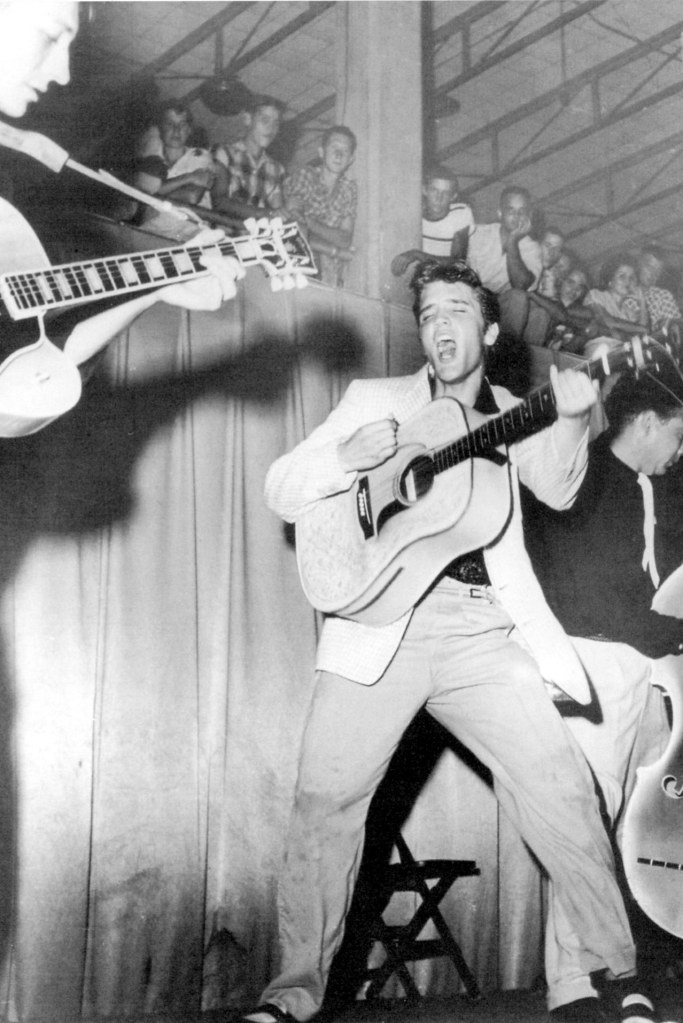
Good-looking boy
In the 2001 Classic Albums documentary on the Elvis Presley album, the Denmark-born Elvis historian and record producer Ernst Jorgensen commented, ‘I think that they well knew that they had a good-looking boy and that they had images of that, but, if you look at the album, I wouldn’t say that they present him as a very good-looking guy on that first album. I’m not saying he looks bad on it, but it’s not a pop star photo if you saw it. It’s actually more trying to portray what he may have been all about and, in that way, I think the album cover is very true to what it was all about and what Elvis’s music was about.’
Dynamic
The striking graphic lettering and Robertson’s photograph were also used on an EP and a double-EP comprising songs from this album, also released in March 1956. The use of the pink ELVIS down the left-hand side of the album sleeve and the lime green PRESLEY lettering along the bottom made the dynamic black and white concert photo pop out from the cover, but, to this day, it’s not known exactly who chose the font and designed the cover. What is known, however, is that the cover image was cropped in order to fit the square format of an LP cover and to eliminate some of the foreground and background clutter.
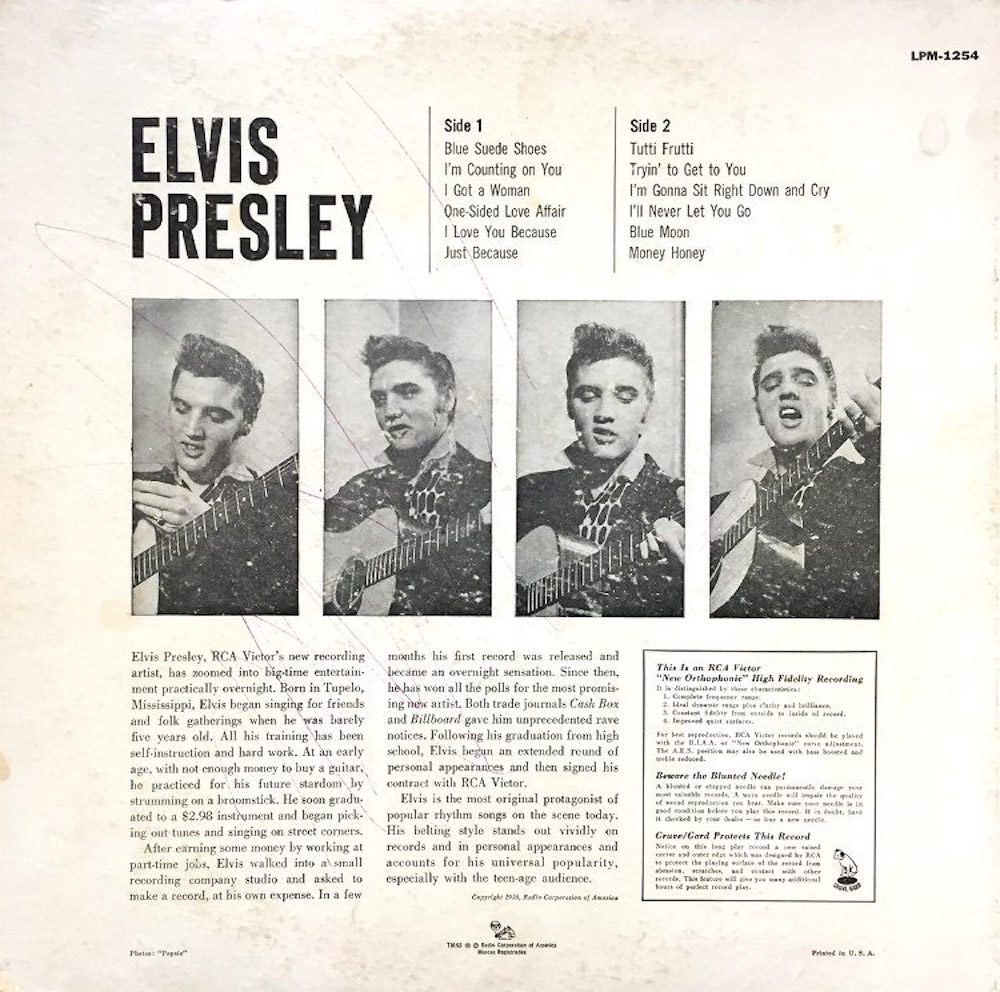
Setting a tone
Elvis’s debut album also helped to set the tone for a wave of change in the music scene. Judged against the myriad of increasingly elaborate photographic and illustrated album covers that proliferated throughout the 1960s and 1970s the cover art may appear simplistic. However, it should be judged in context.
Firstly, in the 1950s the de facto design solution for an album cover was to simply include a black and white PR portrait photograph of the artist, usually in a central position, and then the artist’s name and the title of the album in a sober font within a separate panel. Album cover designs were often bland, so the presence of a striking image of Presley in concert coupled with the colourful and bold lettering was far from the norm. In addition, the album had no obvious title – it was essentially trading off Presley’s name, which by 1956 was becoming increasingly famous worldwide.
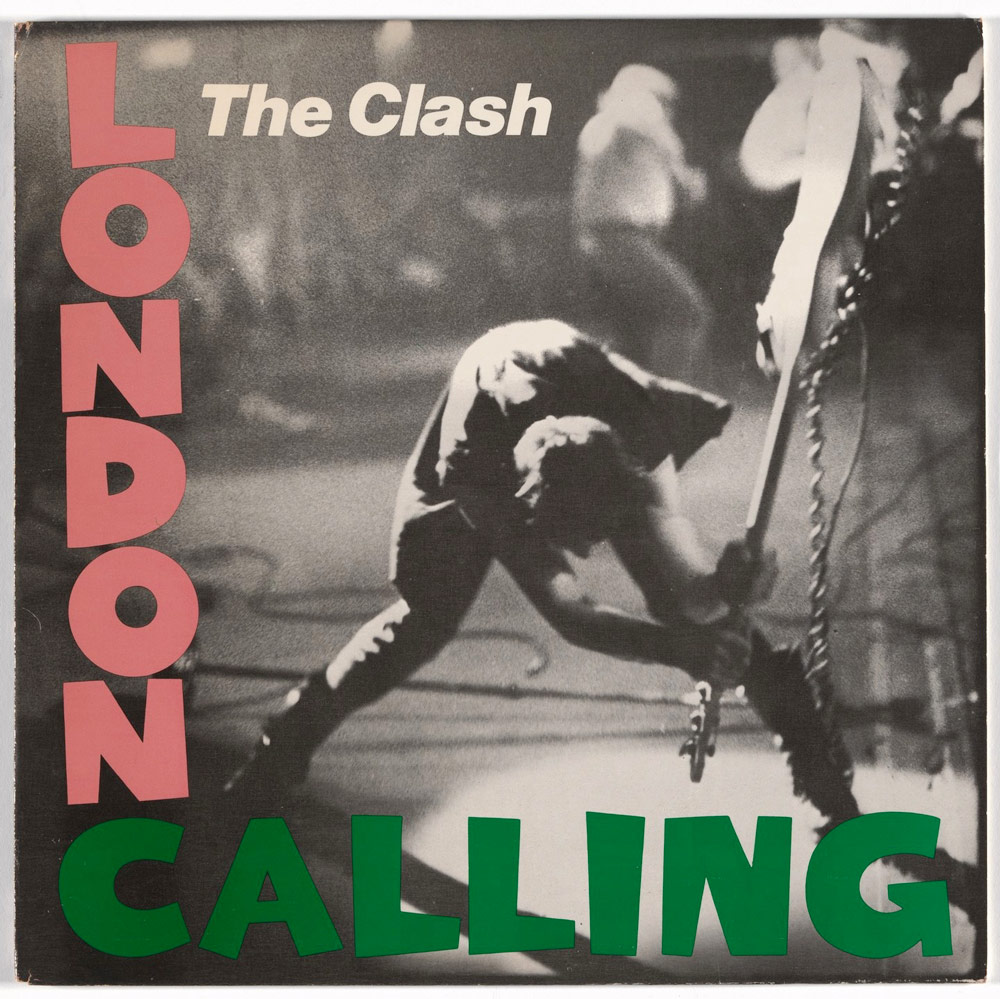
Secondly, what makes the album cover design of the Elvis Presley’s debut album so influential is the way in which it has been imitated multiple times since. This enduring cover has been paid homage to by other musicians on at least five separate occasions. They include the extremely popular 1979 London Calling album by The Clash, which used a black and white concert photo shot by Pennie Smith of the band’s bassist, Paul Simonon, smashing his instrument at a gig in New York in 1979. The Clash’s ‘war artist’, the late Ray Lowry, had bought a copy of Elvis Presley whilst on a US tour with The Clash and felt that the cover image of Elvis had captured everything that rock and roll was about.

Other visual imitators included the F-Punk album released in 1995 by Big Audio Dynamite, who also had the guitarist and producer Mick Jones from The Clash in their numbers. Clearly the visual impact of the Elvis Presley album cover had maintained a major impact on Jones. Other tributes which took their artistic inspiration from the Elvis Presley album include k.d. Lang’s Reintamation album (2006), the Rise Up LP by Sir Cliff Richard (2018) and the single Tony Blair by the controversial band Chumbawamba.

Blazing a trail
In so many ways the Elvis Presley album blazed a trail for other artists that followed. The LP was the first rock and roll record to hit the top of the music charts. It was also the first-ever rock and roll record to earn $1million dollars. That was because of the vibrant content of the recordings, coupled with Presley’s titanic musical talent, but also the unforgettable album cover clearly helped the LP to gain the exposure required to put Elvis at the top of the music world. To many, there he remains to this day.
FACT FILE: Elvis Presley
- Musicians: Elvis Presley, Scotty Moore, Chet Atkins, Floyd Cramer, Shorty Long, Bill Black, D.J. Fontana, Johnny Bernero, Ben Speer, Brock Speer, Doug Poindexter.
- Released: 23 March 1956 (RCA Victor); released in the UK as Elvis Presley Rock n’ Roll
- Best chart performance: No. 1 in the album charts in the UK and the US.
- Sales: Over 1,000,000 certified US sales.
- Fascinating fact: It’s now believed that Colonel Tom Parker effectively commissioned William V. ‘Red’ Robertson to shoot the concert at the Fort Homer Hesterly Armory in Tampa. What might be confusing to non-Elvis aficionados is that almost the same cover design was used for three different record releases – the 12-track LPM-1254 Elvis Presley album; the eight-track, two-record EPB-1254 EP and the four-track EPA-747 EP. All three were released by RCA Victor in March 1956 and all three quickly sold hundreds of thousands of copies.
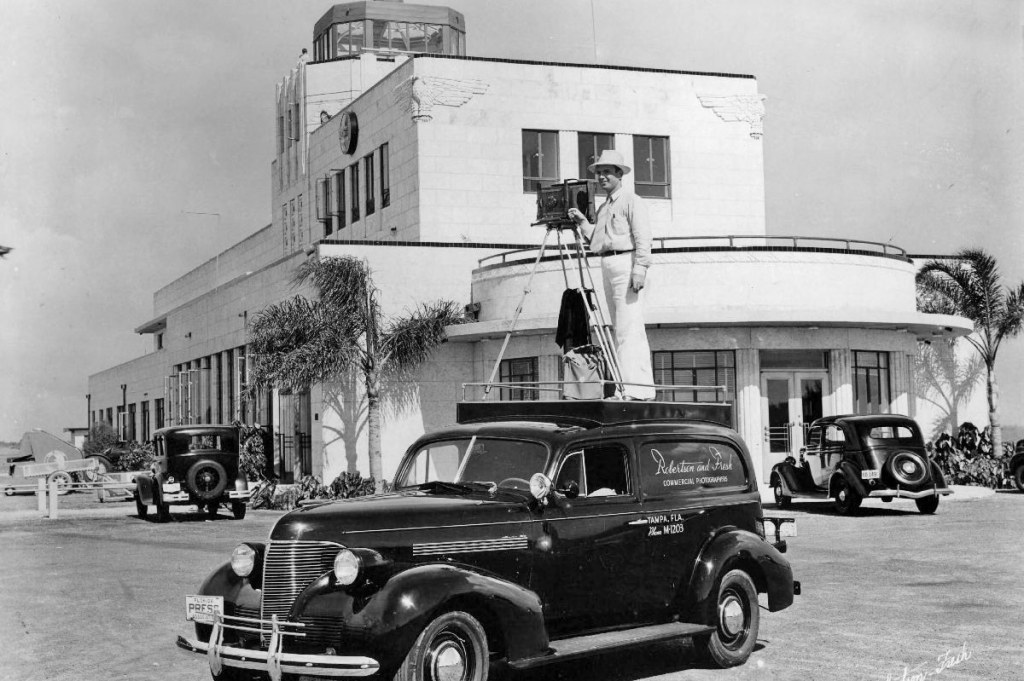
William Vernon ‘Red’ Robertson
William V. ‘Red’ Robertson (19xx-19xx) was a US photographer who co-founded the Florida-based company Robertson and Fresh, which operated from Tampa, Florida, between 1932 and 1960. Robertson worked in the field taking photographs, while his business partner, Harry Fresh, processed and printed the images. Robertson and Fresh produced thousands of pictures that provided an invaluable visual record of the Tampa area – from the Depression to the prosperous post-World War II era. Robertson’s iconic 1955 image of Elvis in concert happened to be one of them.
TOP MUSIC PHOTOGRAPHERS ON THE ALBUM ‘ELVIS PRESLEY’
DENIS O’REGAN:
‘Released nearly 70 years ago into a world where televisions were scarce, Elvis Presley’s debut established him as a Rock & Roll force with a single iconic image. Two decades later, The Clash paid homage to this layout on London Calling. In Rock & Roll, one live image can say it all.’
NICOLE FARA SILVER:
‘Elvis was only 20, and relatively unknown, when this classic photo was taken by William V. ‘Red’ Robertson. The record became the first rock n’ roll album to go to the top of the charts and made Elvis a star. The design is so iconic that even The Clash paid homage to it!’
MAT SNOW:
‘Shot by local agency snapper William Robertson in 1955 when Elvis was propping up a country bill in Tampa, you could see at once that Elvis was a new kind of pop star – an untamed backwoods wildcat. Unlike the slick, staged standard album sleeve, this was hold-the-front-page, verité bottling performance lightning.’
Related reading:

